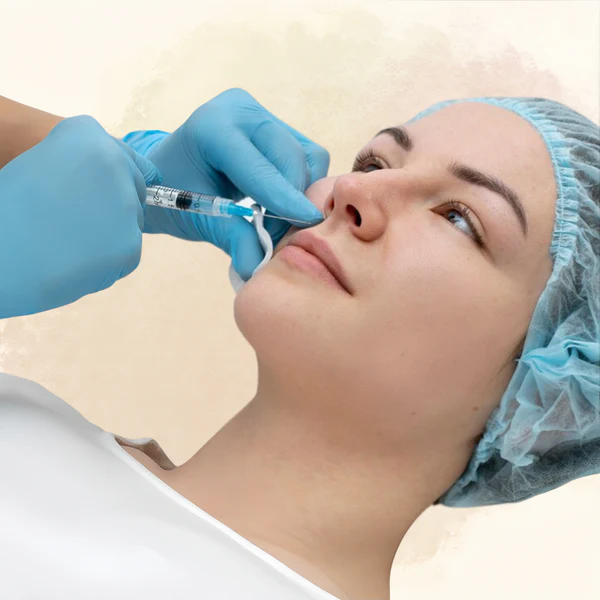Key Considerations Before Undergoing Gynecomastia Surgery
- Huda Batool
- Jan 16
- 4 min read
Gynecomastia surgery, also known as male breast reduction, is a procedure designed to reduce excess fat or glandular tissue in the chest area, helping men achieve a more masculine and contoured chest. While this surgery can offer significant aesthetic benefits and boost self-confidence, it’s important to understand the key considerations before deciding to undergo the procedure. From the cause of Gynecomastia Surgery Cost Dubai to post-operative recovery, here are the essential factors to consider.
1. Understanding Gynecomastia
Gynecomastia is a common condition where the breast tissue in males becomes enlarged. It can occur due to a variety of factors, including hormonal imbalances, certain medications, weight gain, genetics, and underlying health conditions. In some cases, the enlargement may be temporary, while in others, it may persist for longer periods. Recognizing the root cause of gynecomastia is crucial as it will determine the appropriate approach to treatment.
2. Consultation with a Specialist
Before proceeding with gynecomastia surgery, a thorough consultation with a qualified plastic surgeon is essential. The surgeon will assess your condition, review your medical history, and perform a physical examination to determine if you’re a suitable candidate for the surgery. During this consultation, it’s important to discuss your goals, expectations, and any concerns you may have about the procedure and its outcomes.

3. Evaluating Candidacy
Not everyone is a suitable candidate for gynecomastia surgery. Ideal candidates typically have:
Stable body weight
Good overall health with no chronic conditions that could interfere with recovery
Realistic expectations about what the surgery can achieve
No underlying health issues that may contribute to gynecomastia (such as hormonal imbalances or liver diseases)
The surgeon will also assess if the gynecomastia is due to lifestyle factors, medication, or other temporary causes. If the issue can be resolved through lifestyle changes, weight management, or other non-surgical treatments, the surgeon may recommend alternative options.
4. Types of Gynecomastia Surgery
Gynecomastia surgery typically involves one of two approaches:
Liposuction: A technique suitable for patients with excess fat in the chest area. This method removes fat deposits with small incisions and is less invasive.
Glandular Tissue Excision: This method involves removing the excess glandular tissue that causes breast enlargement. It may be more suitable for cases where there’s significant glandular growth.
Combination Approach: In cases with both fatty deposits and glandular tissue, the surgeon may use a combination of liposuction and glandular tissue excision for the best results.
The appropriate technique will depend on the severity of gynecomastia and the individual patient’s needs.
5. Preparing for Surgery
Preparation for gynecomastia surgery involves several steps:
Medical Evaluation: The surgeon may order lab tests, imaging studies, or additional consultations to ensure you're in optimal health for surgery.
Lifestyle Adjustments: Maintaining a healthy diet and regular exercise routine before surgery can improve outcomes and speed up recovery.
Medication Review: Inform your surgeon about any medications you’re currently taking, as certain medications may need to be adjusted or temporarily discontinued prior to surgery.
Stopping Smoking and Alcohol: Smoking and alcohol can hinder healing, so patients are often advised to quit or significantly reduce their intake well before the surgery date.
Arranging Post-Operative Support: Plan for time off work, arrange for assistance at home, and ensure that you have someone to drive you after surgery.
6. Surgical Risks and Complications
Like any surgical procedure, gynecomastia surgery carries certain risks. Some potential complications include:
Infection
Excessive bleeding
Scarring
Numbness or changes in sensation
Irregular contours
Uneven results
Discuss these risks with your surgeon, and make sure you understand the steps taken to minimize complications.
7. Recovery Process
Recovery after gynecomastia surgery varies depending on the technique used, but generally, it involves:
Post-Operative Care: You will likely wear a compression garment for several weeks to help reduce swelling and support healing.
Pain Management: Some discomfort is common after surgery, but this can usually be managed with prescribed medications.
Rest and Physical Activity: Rest is crucial in the first few days following surgery. You should avoid strenuous activities and heavy lifting during the initial recovery phase.
Follow-Up Appointments: Regular follow-up visits with your surgeon are important to monitor your healing progress and ensure everything is proceeding as expected.
8. Long-Term Results
The long-term success of gynecomastia surgery depends on maintaining a healthy lifestyle. Regular exercise and a balanced diet can help sustain the results. While surgery can significantly reduce the appearance of enlarged breasts, maintaining results requires ongoing effort to manage weight, hormonal levels, and overall health.
9. Psychological and Emotional Impact
Many men choose Gynecomastia Surgery Cost Dubai to boost their self-confidence and improve their body image. The procedure can have a positive impact on mental health by alleviating feelings of self-consciousness and discomfort associated with breast enlargement. However, it’s essential to have realistic expectations about the outcomes and recognize that surgery alone may not completely eliminate any underlying body image concerns.
10. Conclusion
Gynecomastia surgery can be life-changing for men struggling with the physical and emotional impact of enlarged breasts. However, before making a decision, it’s crucial to carefully consider your candidacy, the procedure options, potential risks, and the recovery process. Consulting with a skilled plastic surgeon and undergoing thorough pre-operative evaluation will ensure that you make an informed decision and achieve the desired results safely.








Comments